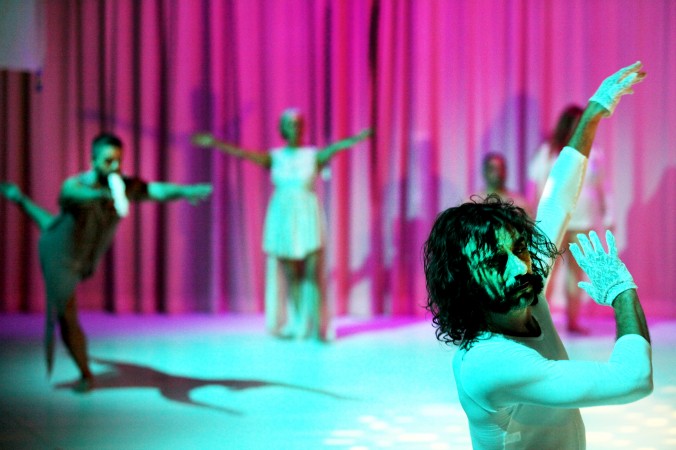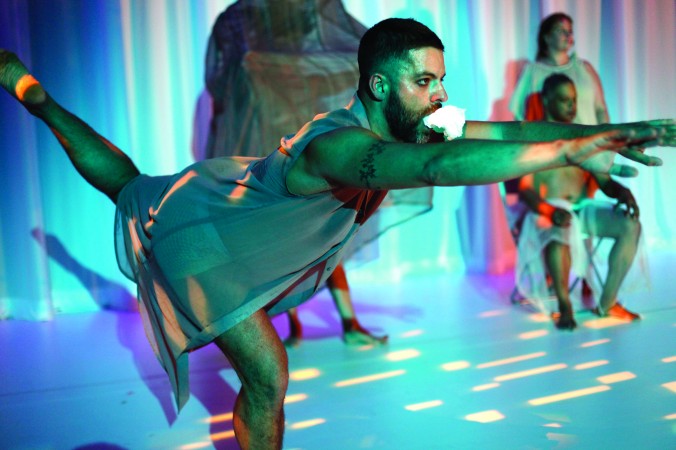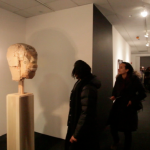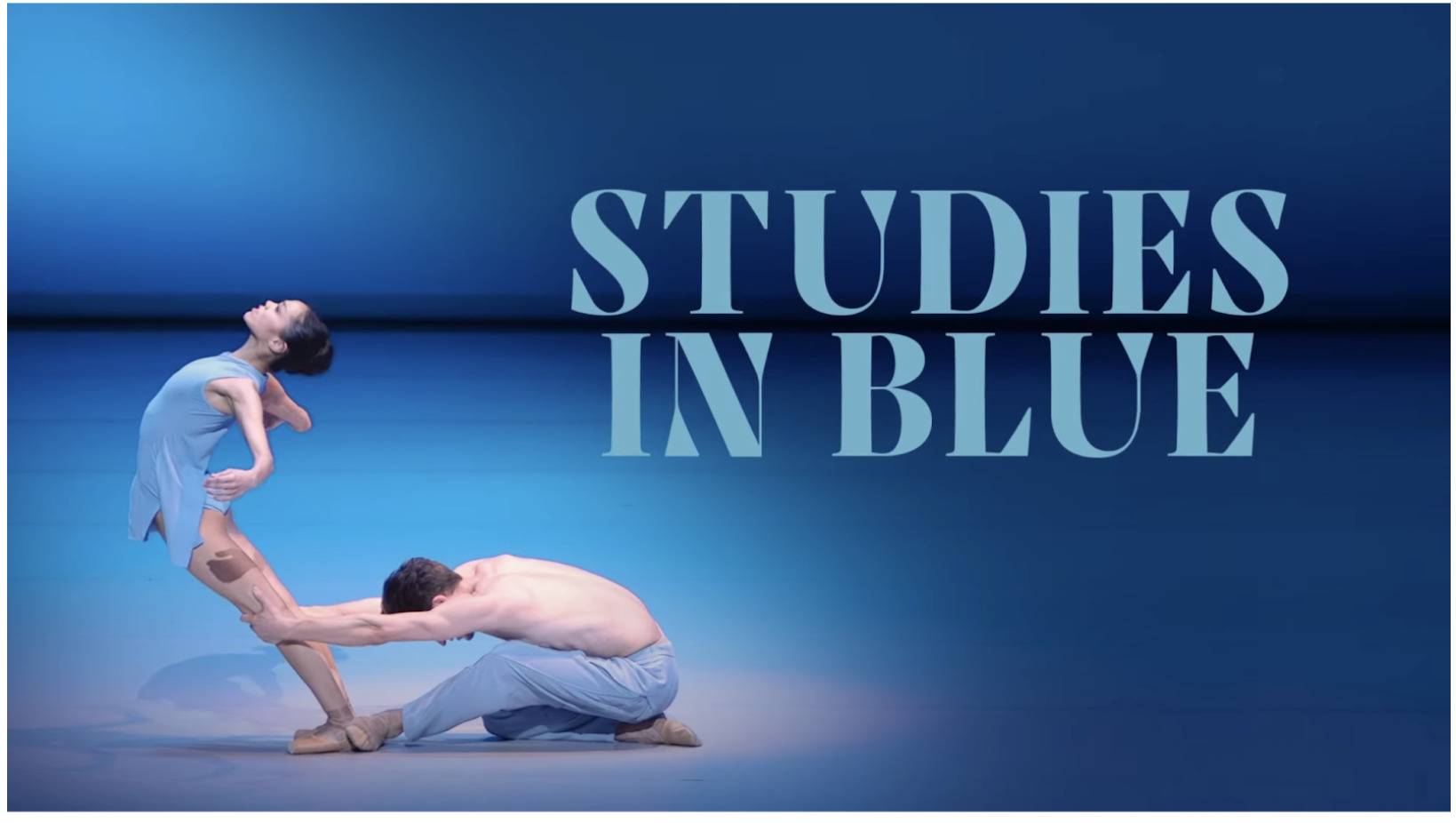As the lights dim, six performers take up chairs amongst the spectators seated in the front row at the Museum of Contemporary Art (MCA). The audience, waiting for one of only four performances by Brooklyn-based artist Miguel Gutierrez and the Powerful People, immediately becomes part of the show. Cast member Ishmael Houston-Jones welcomes us with a little heartfelt laughter and a bit of instructional tantric-breathing to get everyone calm and centered. Shortly thereafter, the entire audience is holding hands with strangers and the mood is set as half-séance, half-performance. Spirits are conjured through voice-over audio and a huge parachute is suspended over center stage, glowing a deep blue.
Each show by Gutierrez and the Powerful People was an intimate and inclusive experience in which some 125 attendees were sitting extremely close to, or on the stage. F Newsmagazine had the opportunity to attend one of the performances, and also to sit down with Gutierrez to discuss his inspirations for the performance, the nature of improvisation and how he works with his group to create dynamic, immersive environments. “And lose the name of action” combines dance, sound and cinematic elements to explore notions of the body, life, death and how familial situations develop throughout these themes.
“It’s funny, in as much as I’m making visual art in a way, I’m more interested in creating situations that obviously have a very specific visual read,” Gutierrez says. “What I’m doing is tuning into the particular energy of a situation and the energy of the space — what’s happening in it.”
Working with lighting designer Leonore Doxsee and sound technician Neal Medlyn, the artist has shaped an environment for dancers to physically espouse ideas about semantics, the mind/body connection and what happens when it breaks down. Much of the inspiration for the choreography for “And lose the name of action” is drawn from Gutierrez’s personal experiences with his father’s recent neurological problems and the complex state of affairs these created for their family.
“My father had a series of blood clots. It’s a long story, but they weren’t properly diagnosed for many years,” Gutierrez explains. “He had a couple of these in his brain and they were causing all kinds of problems. He had to get them operated on and everything’s just kind of rewired up there now. He’s maintained most of his motor skills and language skills, but he struggles somewhat.”
During the performance, the choreography features improvisational movements where dancers shift between graceful and erratic dance. The effect conveys a sense of mesmerizing melancholy, stimulating empathy in the audience as we endeavor to follow the shifting human forms. One performer writhes across the center of the stage while several flitter about the periphery, light on their feet one second, and stomping vigorously the next — their bodies ostensibly at war with themselves. Basic gestures give the impression of either elegance or laborious task. Often performers interact, offering assistance to each other during moments fraught with challenging movements.
Gutierrez generates circumstances where failed individual movements exist adjacent to deliberate actions. The visual effect is arbitrarily erratic and beautifully chaotic through the juxtaposition of these opposing body languages. “I work in time, so I’m interested in things changing or the way in which they change and then how one change leads to another change,” Gutierrez says. “This piece has improvisational sections in terms of the movement, but the movement itself hasn’t been constructed to be repeated per se. I think overall, the gestalt of the show stays pretty much the same because it’s not defined exclusively by the actions but more by the overall container of the feeling.”
The title of the performances was drawn from Shakespeare’s “to be or not to be” soliloquy in Hamlet. Gutierrez explains that coupled with his father’s medical condition, this work derived from his internal philosophical debate about life’s complications. Like the great poet, Gutierrez strives to inspire contemplation a propos of the internal conversations one has, what the bigger picture really is and mental vacillations between faith and doubt. The improvisational aspects of the work really hammer this home.
“The whole point of improvisation is not just that the actions themselves are unknown, but that the consciousness of that movement is a very different kind of engagement,” Gutierrez says. “When you’re dealing with real-time engagement and with what’s actually going on, that gives off a very different energetic read than someone just doing something that they already know. It’s not better or worse, it’s just different. I’m heavily invested in that consciousness.”
He clarifies his belief that individuals encounter his work differently than in interactions with traditional visual art forms such as painting and sculpture. “It’s very different from making a piece someone will stand in front of for maybe fifteen seconds. Which as a result makes what I’m doing very challenging, because I’m hijacking the audience for a much longer period of time.”
The performance moves along resourcefully and is over before we know it. The residual effect is one of quiet philosophical contemplation, if not recollection. Perhaps some fashioned reflections on “What if?” develop individually. And really, isn’t that what we are after in the experience of other’s experiences by way of performance art?























